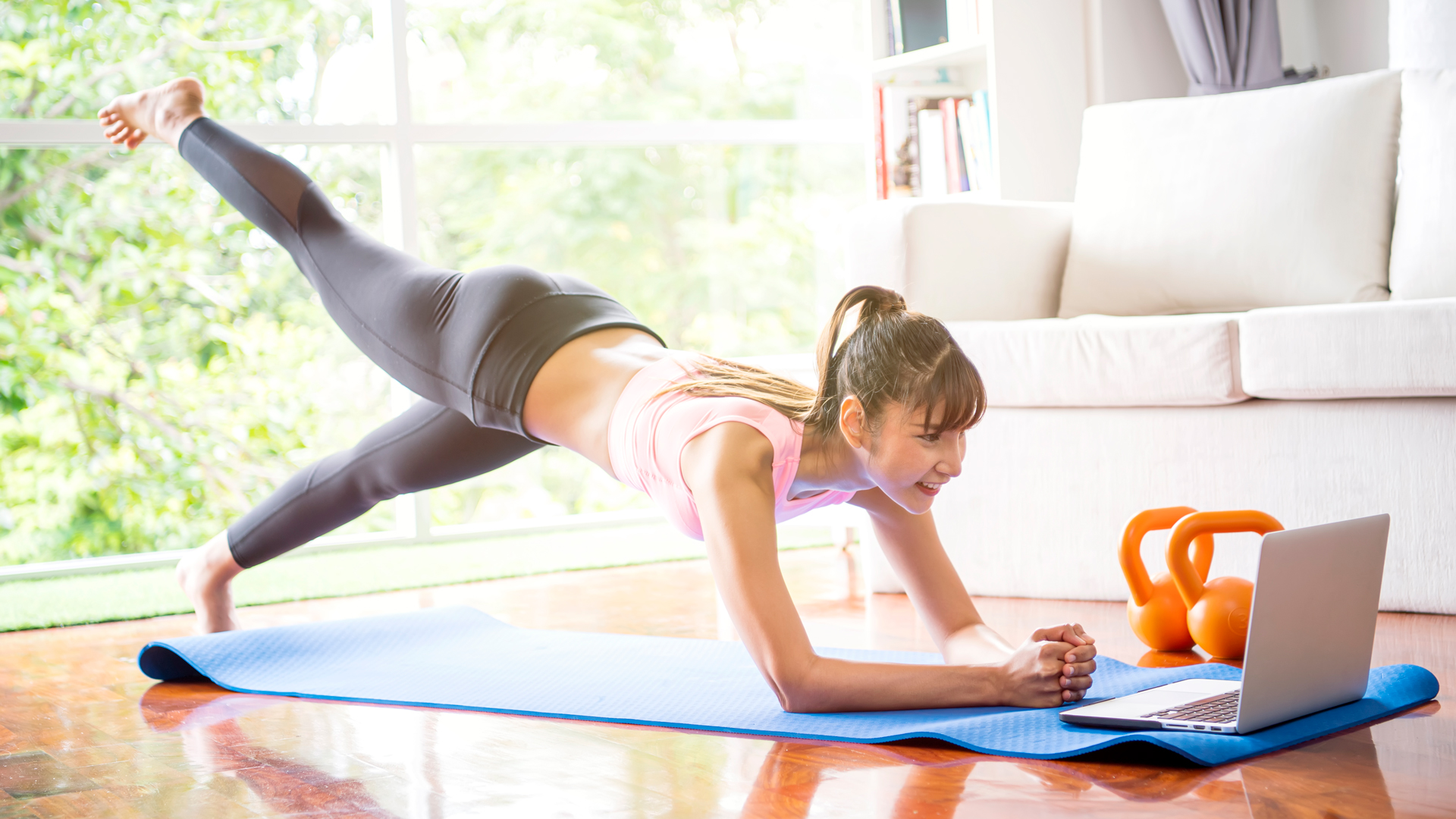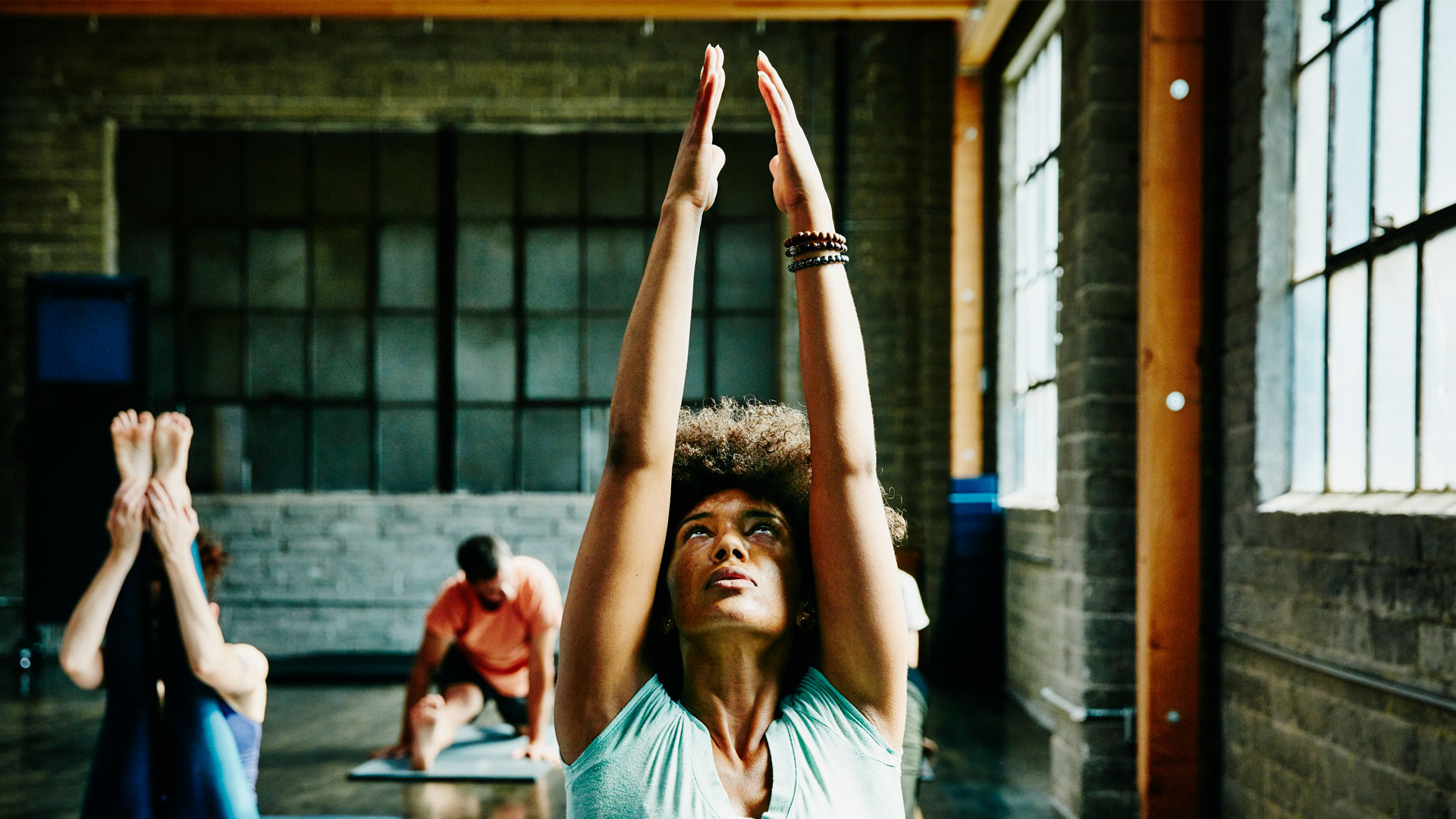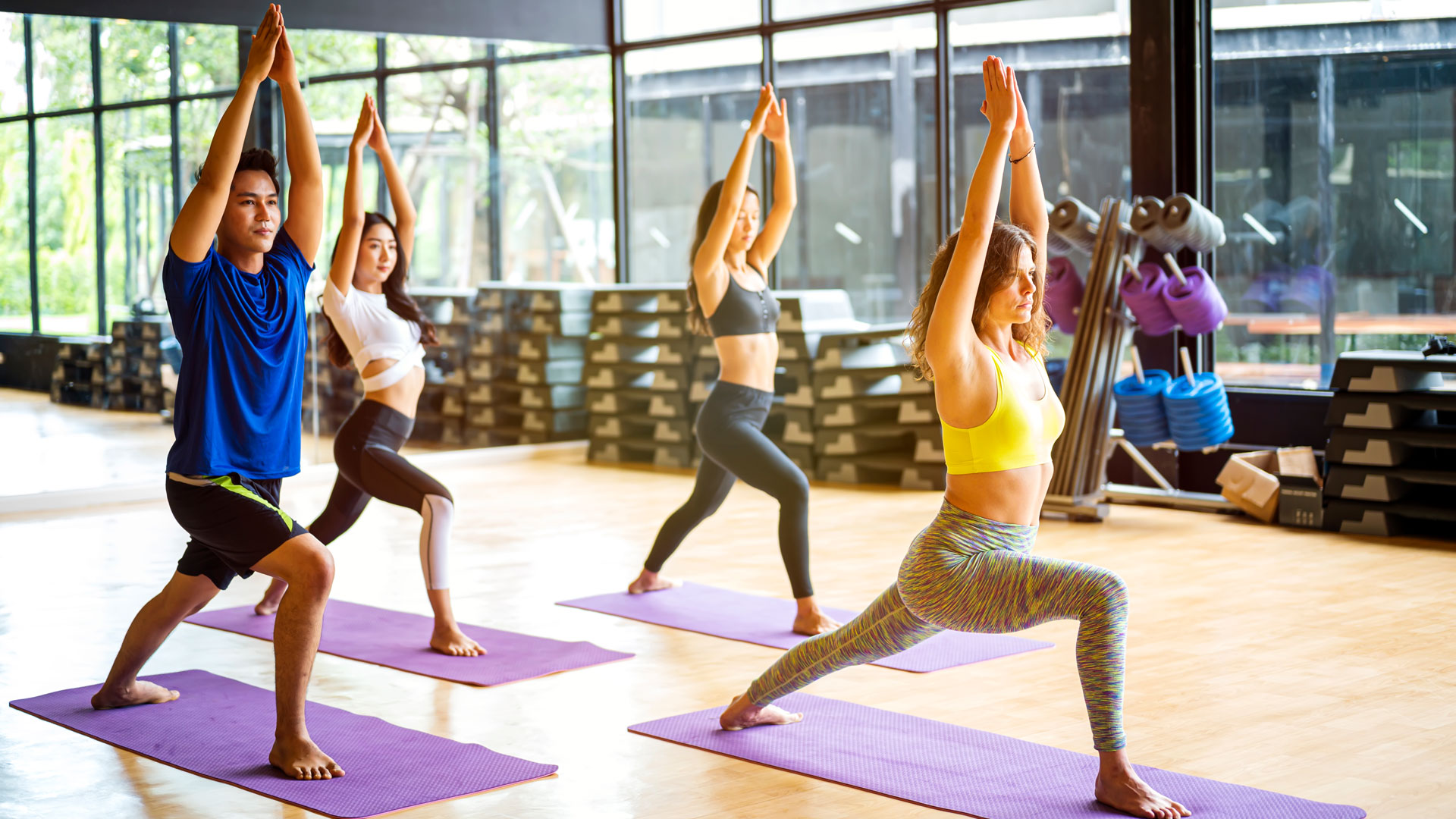Does yoga build muscle?
Yoga is known for increasing flexibility, but does yoga build muscle too?

Yoga is widely practiced around the world, but does yoga build muscle? While most people tend to pick up a barbell when they want to gain muscle, yoga can actually be an underrated, yet effective tool in your arsenal when it comes to building definition.
The practice is known primarily as a great way to improve your flexibility (as shown in this 2016 study from the International Journal of Yoga), but the benefits of yoga actually include building strength and muscle as well. Here's what the latest research says.
- Read more: Best yoga mat
Does yoga build muscle?
Yoga can be an effective tool in your weight-training routine, with a strong yoga practice including principles such as progressive overload, mechanical stress, and mechanical damage to increase muscle mass. In fact, a 2015 study published in the Evidence-Based Complementary and Alternative Medicine journal looking at the effects of 12-week Hatha yoga intervention found that yoga improved muscular strength and lower-back flexibility.
• Read more: Can yoga fix your posture?

However, if you’re looking to build muscle quickly and get a stronger core, simply doing yoga alone won’t be enough. Instead, combining yoga with other forms of exercise will help you achieve your fitness goals, according to Physical Activity Guidelines for Americans. So, how exactly does yoga build muscle?
Progressive overload through pose progression
The principle of building muscle through different types of yoga is similar to weight training. It means increasing the number of your sets and repetitions to encourage muscle growth. Yoga myths might suggest that yoga isn't effective for building muscle, but there are studies that prove the opposite.
A 2010 study published in the European Journal of Applied Physiology showed that participants who had included progressive overload in their workout routine could increase bicep strength and muscle growth. However, the critical difference with yoga is that you're not adding plates to your barbells or increasing the strength of your resistance bands. Instead, you're using your body weight to grow muscles through pose progression.
• Related: Best vegan protein powder
To effectively implement pose progression, try changing your yoga variations over time and steadily increasing the difficulty. Each change will put tension on your muscles and cause them to stretch, which will lead to muscle growth, according to a 2014 study published in the Journal of Complementary Therapies of Medicine.
Start with a basic pose and then slowly add more challenging variations as your strength increases. For instance, if you're looking to build muscles in your legs, Triangle pose or Warrior II are great poses to start on.
Mechanical damage through eccentric overload
One of the ways that you can build muscles is through mechanical damage, which typically occurs through lifting weights. However, you can also achieve the same effect with yoga. According to a 2014 study published in the European Journal of Applied Physiology, lifting heavy weights causes stress on muscle fibers, resulting in microscopic tears. When these tears heal, the muscle will increase in size.
In yoga, you can bring about mechanical damage by holding your poses for longer. This helps the muscles burn out while pushing your body towards fatigue, causing your muscle fibers to stretch and your cells to divide as they heal, enhancing muscle growth.
• Read more: What is hot yoga?
Metabolic stress through challenging flows
Metabolic stress is one of the most important factors for muscle growth, occurring when your body is under a lot of tension and you feel like you cannot do another rep. A 2016 study published in the Journal of Clinical Physiology and Functional Imaging showed that high-loading training combined with long rest helps to induce metabolic stress, leading to an increase in muscle strength.

In yoga, metabolic stress is a physiological process that our muscles and tissues undergo, sometimes called "the burn". This method can be challenging to achieve when doing yoga because you have to perform more challenging poses. However, as long as you apply a lot of resistance, you will stimulate the metabolic stress that brings your muscles under tension, eventually leading to muscle growth. The amount of metabolic stress you create will depend on the depth and variations of your yoga poses.
• Related: Best resistance bands
Does yoga build back muscle?
Many yoga positions help to increase strength in different specific muscle groups. Yoga is one of the best exercises for maintaining flexibility and back strength. It entails stretch training which contributes to muscle growth. A 2020 study published in the Journal of Clinical Physiology and Functional Imaging showed that stretching between active muscle contractions increases muscle growth.
Yoga can be incredibly beneficial for the back muscles, as most yoga poses depend on the flexibility and strength of your spine. During twisting, your disc decompresses and elongates your spine, causing the muscles around your spine to have an increased blood flow leading to growth. In fact, a 2015 study published in the Journal of Bodywork and Movement Therapies showed that Hatha yoga helped to improve flexibility, muscle strength and balance in an individual with spinal injury.
A 2015 study published in the Journal of Gerontology recommends yoga as a form of strength exercise on its own. Strength training is an exercise that requires an increase in progression to strengthen the musculoskeletal system, as explained by the Australian government's Better Health website.
However, yoga can be considered a well-rounded form of strength training that goes beyond muscle size and strength to focus on other aspects of health, such as flexibility, concentration, mindfulness, and cardiovascular endurance. Other benefits can include:
Yoga is a fantastic way to exercise that has a multitude of benefits, including increased flexibility, strength, and endurance. Plus, it's also a low-maintenance way to work out, with only a yoga mat and some comfortable clothes needed to start you off.
Sign up for the Live Science daily newsletter now
Get the world’s most fascinating discoveries delivered straight to your inbox.
Annette Khayela is a health, fitness and nutrition content writer and blogger. Not only is Annette a Google-certified digital marketer, but when she's not writing she'll be working with people to help them achieve their fitness goals.











